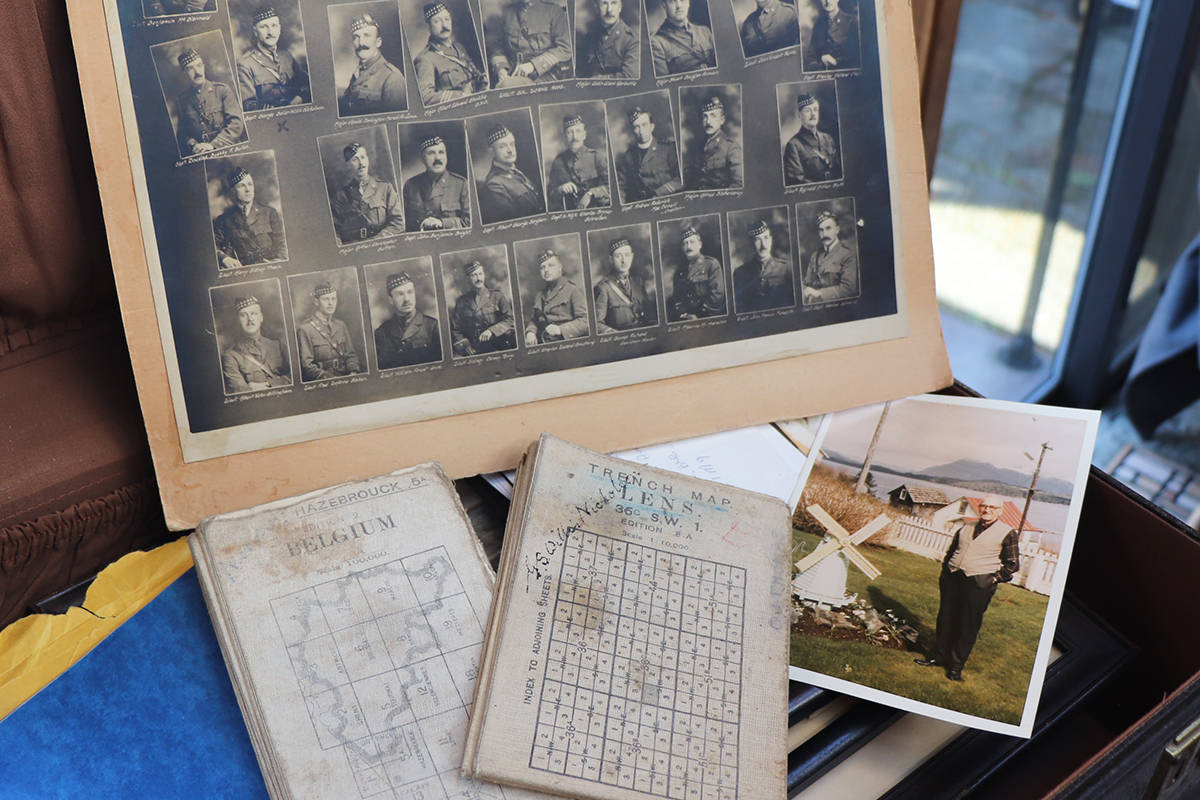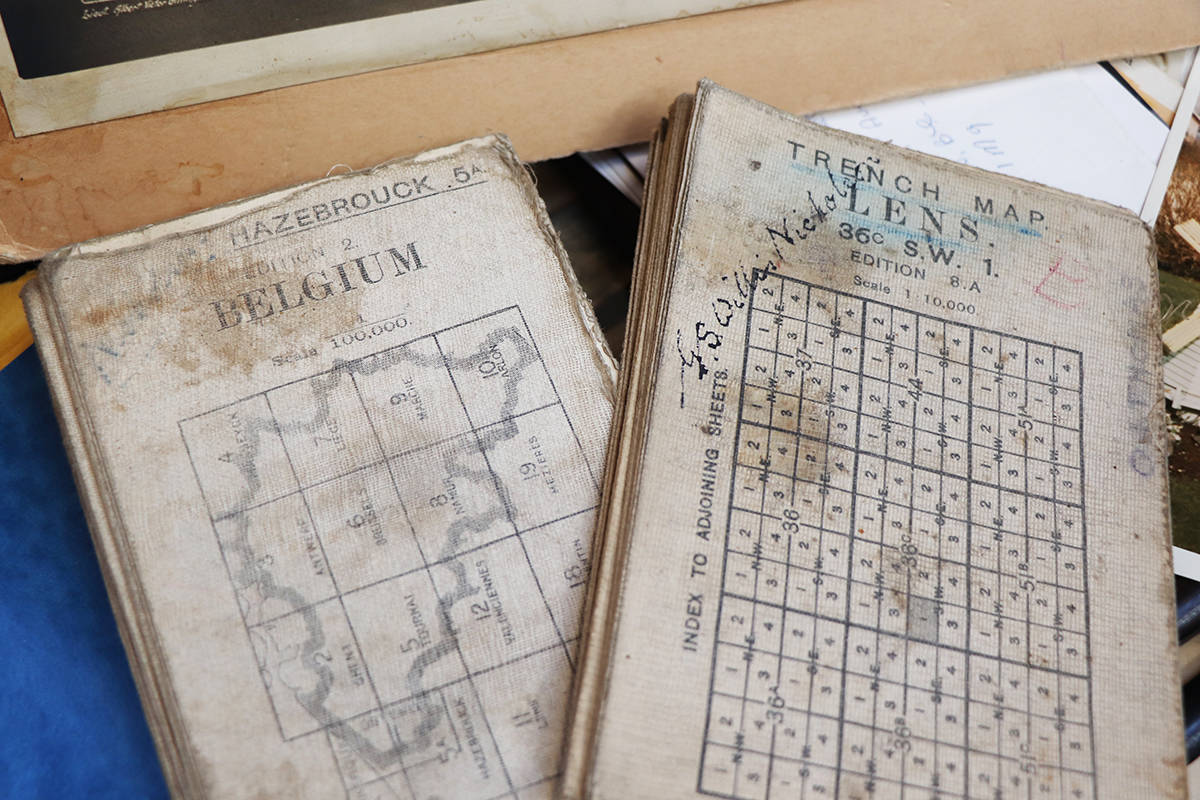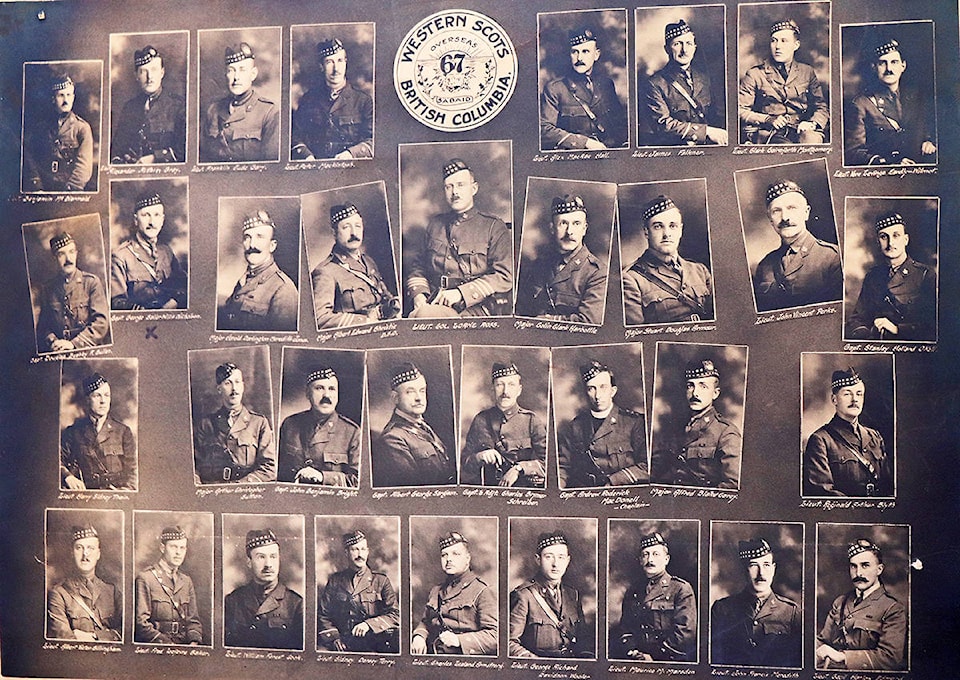With no veterans of the war remaining stories about the First World War are tougher to come by.
Saanich resident Colin Nicholson and his wife Joan have interesting life stories themselves, growing up on the wild west coast of Vancouver Island in Zeballos and Tofino.
But Colin, 84, feels fortunate to have spent time with his paternal grandfather, George Salier Willis Nicholson, hearing war snippets along the way. While George, like most veterans, avoided revisiting battle stories, Colin learned little things such as how his grandpa never missed a day of shaving in his life, even in the muddy trenches of France and Belgium during the First World War.
“I tried a couple times to get some war stories out of him, but he was like most veterans, he didn’t seem to want to talk about it. I don’t blame him, when you see what went on there,” Colin says.
Periodically something would remind him and he would mention things about France or Belgium, Colin says, “but he never mentioned the savagery and bloodthirstiness that went on, which is too bad in a way, because people don’t realize what really went on over there.”
George, who died in 1980 at age 92, was a colourful character who began his military career in his native New Zealand around 1904. He served in both world wars for Canada, achieving the rank of major, and was awarded the Military Cross for “exemplary gallantry during active operations against the enemy on land,” in 1917 in France.
READ MORE: Courage Remembered
Author of the history book, Vancouver Island’s West Coast – 1762-1962, he attempted three times later in life to write his memoirs. The results of those efforts, including a detailed chronology of his military activities and achievements, now reside in a pair of monogrammed suitcases that came into Colin and Joan’s possession after George died.
As Colin sifts through the materials, his knowledge of early points in George’s chronology mixes with childhood memories.
“It was quite the thing to see him all dressed up in his uniform. He always had a driver with him and a swagger stick he had tucked under his arm,” Colin says. “He was a real soldier, an old-world soldier. I’m positive he loved war, he must have because he certainly organized things to do with war and was right in the middle of it.”
George’s documentation places him at many battle points through the First World War, including Ypres (Passchendaele), the Somme, Vimy Ridge and Lens in France. Two of the more fascinating pieces of memorabilia in the cases come from that era: First World War trench maps from Lens and Belgium. They’re a tiny glimpse into what daily life must have been like in those terrifying days dodging mortars and enemy bullets.
Wounded with a gunshot to the hip during the battle of the Hindenburg Line in 1918, George recuperated in England for a month then returned to mainland Europe in time to be in France on Nov. 11 when the armistice was signed.
He returned to the Island, getting into the pub and hotel business in Sooke and even, Colin says with a grin, engaged in some rumrunning missions to the U.S. during Prohibition. An experienced leader who often took on new challenges, George later spent time in Clayoquot (Stubbs Island) and the gold-mining town of Zeballos doing everything from running supplies to the mine, to serving as justice of the peace, mine recorder and postmaster.
His passion for military life led to a recommissioning as a captain in 1940, in his 50s, as a member of the Canadian Scottish Regiment. He was in charge of a company guarding the Tofino airport during construction and operations.
Colin tells a related story about how George one day visited the waterside cookhouse of the company building the airport. When he arrived, he noticed meat laying in the dirt. When he asked, he was told “the crew will eat nothing but prime rib,” and the rest was discarded for the bears to pack away.
The resourceful military man organized a truck to pick up the meat. “For his troops, this was prime rib as far as they were concerned,” Colin says. “They were living on army rations and stuff. He was an instant hero, I guess, he probably had the best fed battalion in all of B.C.”
Colin’s late father also served in the Second World War, with 103 Company Tofino of the Pacific Coast Militia Rangers, a group that patrolled B.C.’s coast watching for signs of a Japanese invasion. The eventual internment of Japanese residents living in the area, a wartime reaction, saddened his father, Colin says.
“My dad worshipped the Japanese; he fished with them and he packed fish from Clayoquot to Seattle with them,” he says.
Colin recalls as a teenager being introduced by his father after the war to a Japanese fisherman who was the son of a man he worked for.
“I can still remember that to this day, he was so excited that this fellow with his fishing boat had come into Tofino. He wanted to make sure that I met him.”
While the stories of his father and grandfather form part of his family’s history, Colin says it’s important that younger generations hear and read them to know a little more of what it was like during wartime.
Do you have a story tip? Email:don.descoteau@blackpress.ca. Follow us on Instagram. Like us on Facebook and follow us on Twitter.


